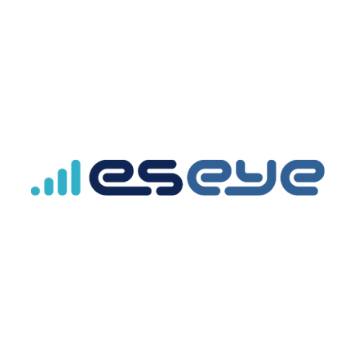Blogs
08 March 2024
Reading Time: 4 mins
Blogs
08 March 2024
Reading Time: 4 mins

Eseye
IoT Hardware and Connectivity Specialists
LinkedInIn the field of healthcare and medicine, remote patient monitoring (RPM) devices are transforming the way medical professionals, doctors, and caregivers interact with their patients.
A proliferation of IoT-enabled medical devices means all aspects of the healthcare journey, from diagnostics, through administration of treatment, to ongoing monitoring, can be delivered to patients faster, easier, cheaper, and at scale.
The COVID-19 pandemic was a significant driver for remote healthcare and patient monitoring as it enabled both patients and physicians to interact in safety.
But now, more than three years later, adoption is still going strong, with research from healthcare intelligence specialist Definitive Healthcare revealing that RPM procedure claims volumes were up nearly 1,300% between 2019 and 2022.
The increase in claims volume clearly shows more healthcare providers are recommending the remote patient monitoring devices to patients, even since providers’ offices have reopened, and populations are vaccinated.
Telehealth and telecare also present a huge business opportunity for technology companies, with the value of the IoT in Healthcare (IoHT) market expected to more than double from $128 billion in 2023 to $289 billion by 2028.
To accelerate this growth in the market, Eseye’s State of IoT Adoption report found that healthcare and medical device organizations rated reducing costs (29%), increasing profit (25%), and increasing revenue (24%) as the top benefits their IoT initiatives focused on.
But there are still challenges to overcome, and primary care physicians and other healthcare providers see data security and limited infrastructure as top concerns.
Bluetooth and cellular are the two mainstream technologies currently enabling RPM device communication; however, more RPM organizations than ever are making the switch to cellular connectivity because it delivers greater benefits than Bluetooth.
While Bluetooth components are cheap and readily available, the technology is somewhat unreliable. Even the most technically astute among us have experienced frustrations when pairing consumer devices like headphones, speakers, or printers. When you consider that a large portion of the RPM target market is the elderly and infirm, temperamental technology is less attractive.
The other major obstacle is that Bluetooth is a short-range connectivity technology, so it needs to connect to some kind of gateway with internet access to unlock the real benefits of remote healthcare and monitoring.
Cellular-enabled IoT devices solve both these issues from the outset.
In conversations about how IoT can help both consumers and businesses in the field of medicine, a number of similar sounding terms like ‘telehealth’ and ‘telecare’ pop up that can get very confusing.
In the US, the term ‘telemedicine’ is frequently used as well. So, we’ve put together a few definitions to help make sense of it all.
Telehealth equipment helps people to manage long-term health conditions from the comfort of their own home. Remote telehealth devices are worn on the patient’s body and collect data about their vital signs. This enables a doctor or physician to regularly monitor the patient’s health using data from the device, without the need for a face-to-face visit.
Consumers benefit from ease of use and convenience, while healthcare professionals can get more done. Other potential users include nurses, pharmacists, and social workers, who help with health education, social support and medication monitoring.
Telehealth equipment is typically focused on condition monitoring and sends information back to a doctor or GP for assessment. Use cases include:
What is telecare?
Telecare equipment focuses on 24/7 environmental monitoring alerting caregivers if a patient has had an accident or emergency. The purpose is to help vulnerable, elderly, or sick consumers stay safe and independent in their own homes or other environments, such as care homes.
Telecare examples
IoT devices would likely be consumer-oriented sensors, alarms, and cameras that send information to family, friends, caregivers, or even emergency services. Use cases include:
Smart static sensors are positioned above door frames and send alerts if they have detected irregular movement patterns. For example, if a patient leaves their bedroom in the middle of the night and doesn’t return within a set period of time
Oftentimes these smart sensors communicate to one another and feed the data back to a central hub or platform where it can be analysed. Consumers can often access these insights on a mobile app and monitor behavioural activities remotely.
What is telemedicine?
Telemedicine can be used as an umbrella term to cover the applications of telehealth and telecare, but it is also used in some cases to refer more specifically to diagnostic, surgical, or treatment-related applications usually delivered by doctors.
This could include tools for taking blood or saliva specimens remotely, delivery of intravenous fluids and medication, or cognitive diagnostics. A cutting-edge application is even remote surgery, where a proxy robot is used to perform invasive surgeries by an operator in another location.
The future of remote patient monitoring
As cellular IoT devices become cheaper and more mature, remote patient monitoring options are transforming the way that healthcare is delivered around the world, resulting in easier access to services, more personalised care, reduced costs, and improved patient outcomes.
See how healthcare device and wearable biosensor manufacturer Biofourmis achieved a more continuous connectivity experience for customers and scaled its services globally by moving from Bluetooth to cellular connectivity.
Read case study
Eseye
IoT Hardware and Connectivity Specialists
LinkedInEseye brings decades of end-to-end expertise to integrate and optimise IoT connectivity delivering near 100% uptime. From idea to implementation and beyond, we deliver lasting value from IoT. Nobody does IoT better.